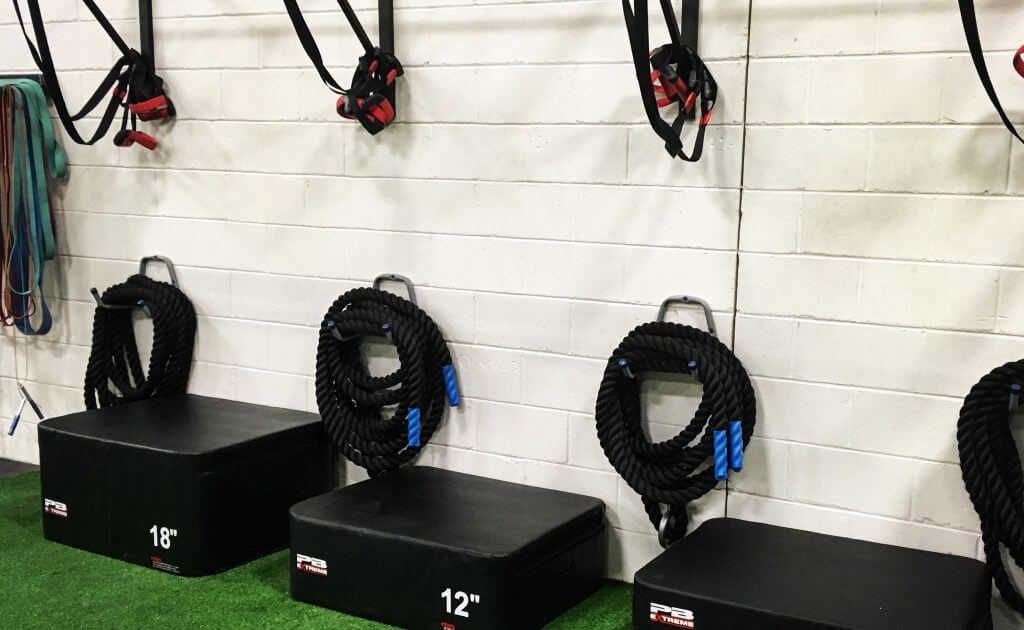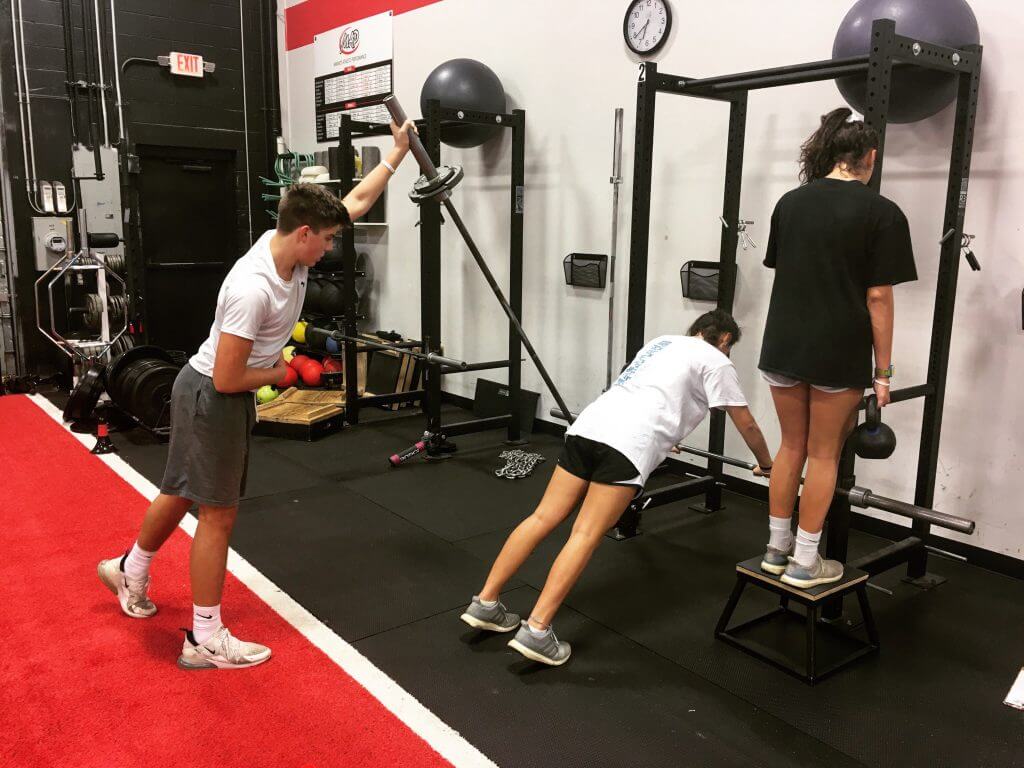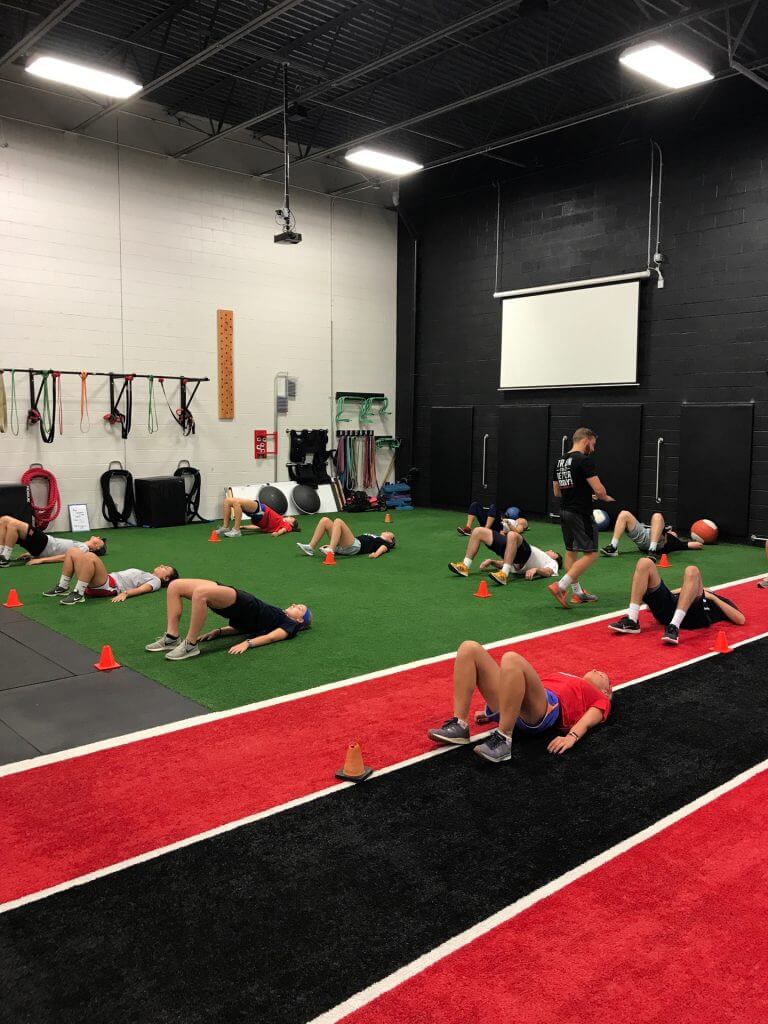Strength Training: The Uniting Factor between Pool and Field

By Madeline Ladd, Swimming World Intern.
When you think swimming…
What do you think? At first glance, swimming can seem as if it is a sport like no other. How many athletes stare at a black line for countless hours per week with their heads underwater, training all year just to get that best time by one one-hundredth of a second? Not many.
However, the key to swimming – and many other sports for that matter – does not simply lie in the basic practice. It has been proven time and time again that the real secret to success is not only what is done in the pool or on the field, but also what happens in those extra hours spent in a strength training facility. Strength training – a method of training used by many athletes – bridges the gap between all sports, showing they are not as different as they seem.
Paul Kenny, Certified Strength and Conditioning Specialist, Director of Marino’s Athletic Performance, and Co-Owner of Marino’s Fitness in Downingtown, Pa., has had countless years of experience training high school and collegiate athletes in his facility. Kenny is a strong supporter of strength training and its benefits on an athlete’s performance: “Every athlete can benefit from a well-designed strength program. A training program is meant to strengthen muscles, prevent injuries and improve performance.”
Versatility

Photo Courtsey: Paul Kenny, @marinosathleticperformance
Kenny has hundreds of athletes walk in and out of his facility every day, all coming from different sports and equipped with various strengths. Training right next to a swimmer could be a baseball player. The two are there with one shared goal in mind: to get stronger and excel in their sport. Though other sports that take place outside of the water may seem vastly different from swimming, many of the muscle movements can be surprisingly similar. Kenny remarks:
“A basketball athlete jumping up for a rebound and a swimmer pushing off the wall during a turn use the same muscles to produce force vertically. A baseball pitcher throwing 90 mph needs the same shoulder range of motion as a swimmer does in the water.”
Injuries and Performance
Over the years, strength training has been researched for improving athletic performance. When a muscle gets bigger and stronger, its ability to produce force increases, thus enhancing an athlete’s performance.
“Biomechanics is the science of human movement and how the body works together to produce movement,” Kenny stated. “Training an athlete through specific movement patterns challenges their body to adapt to various stresses placed on it and teaches muscles how to work together.”
In addition to increasing muscle mass, strength training can aid in injury prevention. Kenny finds that one of the most common reasons athletes begin training at his facility is to prevent or heal a sports-related injury: “Many sports-related injuries stem from overuse, muscular imbalances, and improper movement patterns. Strength training can play a huge role in keeping an athlete in the water, or on the field.”
Tailoring your Training

Photo Courtesy: Paul Kenny, @marinosathleticperformance
Athletes in every sport need a specific workout regimen tailored to their needs. This is why Kenny emphasizes the need for individualized training and a customized strength program for each athlete based upon the type of movement done in their sport. For example, Kenny shares:
“Swimming requires a repetitive overhead motion and the athlete’s ability to maintain a horizontal body position throughout the duration of a practice or meet. This repetitive overhead movement requires excellent scapular (shoulder) stability, proper upward rotation of the scapula, and strengthening of the muscles surrounding the shoulder joint.”
For swimmers, Kenny recommends exercises like horizontal rows, face pulls, landmine press, push ups, planks, bear crawls and bird-dogs just to name a few. Notice that no crunches or sit-ups were included – what Kenny refers to as improper ab exercises. “The most beneficial movement and exercise for a swimmer is dependent on the individual. Never let a single exercise be the foundation of the program,” Kenny emphasizes.
Getting Started
To athletes reading who are interested in the prospect of starting a strength training program, Kenny has a few words of advice:
“Find a certified fitness professional in your area, and have them complete an evaluation. The coach will provide objective results on how the athlete moves, where they need improvement, and how these scores translate to the sport. A customized strength training program can be created for the athlete, and the road to success has been paved!”
Strength training conveys that all sports aren’t as drastically different as they let on. Next time a swimmer watches a baseball game or vice versa, they can realize the shared muscle movements and repetitive motions. Across the board, the work put in to strengthening the muscles outside the normal two-hour practice can have the greatest, longest-lasting impact on the athlete who chooses to go the extra mile.
-All commentaries are the opinion of the author and do not necessarily reflect the views of Swimming World Magazine nor its staff.




Jennifer Ann Raiffeisen Monroe. Heidi Coffman. Ron Lee II
Annika Schick Rightontrack